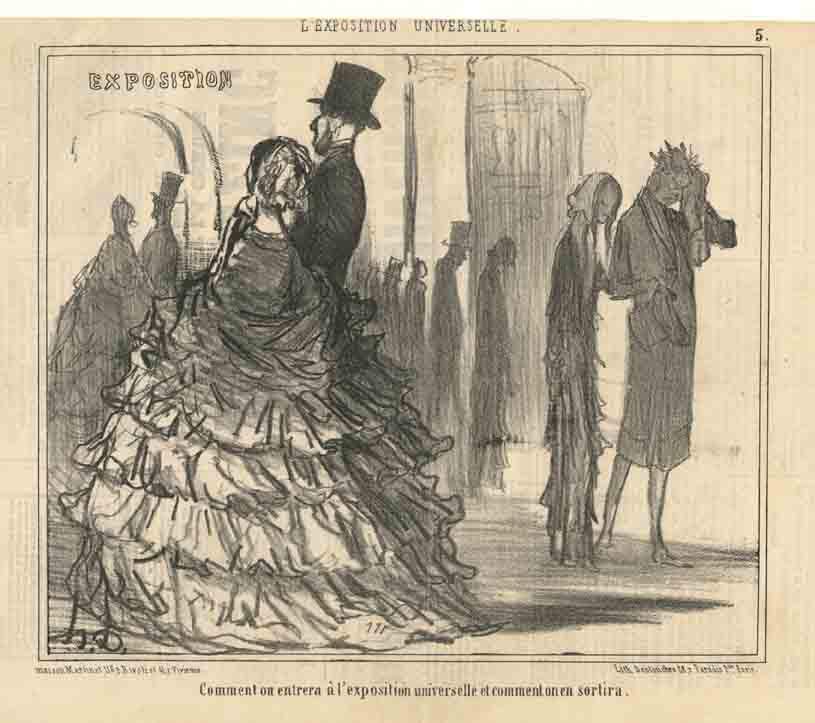Opening Sept. 15, 2017, and closing Jan. 7, 2008, is the exhibition Honoré Daumier: actuality and truth, dedicated to the French artist Honoré Daumier (Marseille, 1808 - Valmondois, 1879), one of the greatest exponents of realism. At the Museo Civico di Villa dei Cedri in Bellinzona (Canton Ticino, Switzerland), the exhibition, curated by Matteo Bianchi and Carole Haensler Huguet, aims to investigate satire and social denunciation in Honoré Daumier’s cartoons, but not only: also exhibited are several works including sculptures, drawings and matrices to restore the image of a complex artist, analyzed on the basis of a thematically articulated path. And the focal theme is the birth of the satirical press: in the exhibition the public can see several lithographs produced for magazines such as La Caricature (the first satirical newspaper in the world, closed in 1835) or Le Charivari).
“Human reality,” reads the exhibition’s presentation, “is at the heart of Daumier’s work, in a key era such as the mid-nineteenth century, marked by Nazi claims and the rise of the working class. The social poetry drawn in Daumier’s popular prints found wide dissemination thanks to large-scale lithographic reproduction: the artist, between polemic and irony, illustrates and comments on the difficult lives of the poor who from basements spy on the elegant steps of gentlemen, or who from dormer windows tenderly gaze at the moon. The artist is also a great disseminator of ideas, a journalist who uses images instead of words, a cartoonist of political satire who, like his colleagues today, reacts to current events.”
The exhibition, as anticipated, is divided by themes that trace the artist’s career. From the development of modern society (scenes of walks, public transportation, picnics, and seaside vacations: Croquis parisiens, scenes of daily life in Paris) to the satirical beginnings with caricatures and cartoons that would also cost Daumier prison, from reflections onEurope to those on justice (the latter the subject of fierce satire on Daumier’s part), without neglecting his relations with the art world (Daumier’s criticisms in fact did not spare artists, exhibition audiences, and academic juries).
This is a highly topical exhibition in that it spurs visitors to reflect on freedom of information and freedom of expression. Alongside the exhibition, there will also be side events, such as historical walks, meetings and in-depth discussions.
The exhibition is open Wednesday through Friday from 2 to 6 p.m., Saturdays, Sundays and holidays from 10 a.m. to 6 p.m. Closed on Mondays and Tuesdays. Admission: 10 Swiss francs (9 euros) full, 7 Swiss francs (6 euros) reduced. Guided tours for groups of up to 25 people at a cost of 180 Swiss francs in Italian and 200 in foreign lunge. Also possible are historical-botanical visits to the Cedar Villa (same cost) and combined guided tours (exhibition + historical-botanical visit at 220 Swiss francs in Italian and 25o in foreign languages). The catalog is published by Pagine d’Arte. All information (including calendar of side events) at www.villacedri.ch.
Image: Honoré Daumier, Comment on entrera à l’exp osition universelle et comment on en sortira (“How we will enter the universal exposition and how we will leave it”; 1855; lithograph, 25.1 x 21.2 cm; Matteo Bianchi and Carolina Leite Collection, Tesserete);
 |
| Honoré Daumier's social denunciation on display in Bellinzona |
Warning: the translation into English of the original Italian article was created using automatic tools. We undertake to review all articles, but we do not guarantee the total absence of inaccuracies in the translation due to the program. You can find the original by clicking on the ITA button. If you find any mistake,please contact us.